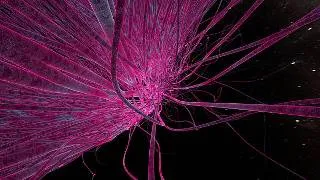Nanofibers
Nanofibers
are fibers that are nanometers in diameter. Nanofibers can be taken from
different polymers and therefore have different physical properties and
possibilities of application. In some examples of natural polymers include collagen,
cellulose, silk fibroin, keratin, gelatin, and polysaccharides such as chitosan
and alginate. Polymer chains are connected by cooperative bonds. The diameters
of the nanofibers depend on the type of polymer used and the method of
production. All polymer nanofibers are unique for their large surface
area-to-volume ratio, high porosity, admirable mechanical strength, and
flexibility in operation compared to their microfiber part.
History of Nano-fiber
Nanofibers
were first produced by electron-spinning four centuries ago. Scientist Anton
Formals were the first person who attempts nanofiber production between 1934
and 1944 and published the first patent describing the experimental production
of nanofibers. In 1966, Harold Simons patented a device that could make thin
and light nanofiber fabrics with different motifs. Only in the late twentieth
century did the terms electro-spinning and nano-fiber become common among
scientists and researchers. Electro-spinning continues to develop today.
Different making methods of nanofiber
There
are several methods for making nanofibers, including drawing,
electron-spinning, self-assembling, template synthesis, and heat-induced phase
separation. The most widely used method for producing electrospinning
nanofibers are the straightforward setup, the ability to mass-produce isolated
nanofibers from different polymers, and the ability to generate ultrathin
fibers with controllable diameters, compositions, and orientations. This
flexibility allows for the control of the size and configuration of the fibers
so that a variety of structures can be fabricated for the intended application.
Properties of nanofiber
1.
Nanofibers can be generated from different polymers.
2.
It has a diameters range in nanometer.
3.
Polymer chains are connected via covalent bonds.
4.
Diameters of Nanofibers depend on the type of polymer used and the production
method.
5.
Nanofibers are unique for their large surface area-to-volume ratio.
6.
It has a high porosity.
7.
It has applicable mechanical strength.
8.
Good flexibility.
9.
Nanofibers have many possible technological and commercial applications.
Nanofibers fabrication method
Electro-spinning
is the most widely used Nanofibers fabrication method. The instruments
necessary for electro-spinning include a high voltage supplier, a capillary
tube with a pipette or needle with a small diameter, and a metal collecting
screen. One electrode is placed in the polymer solution and the other is
connected to the electronic connector. An electric field is applied to the end
of the capillary tube that contains the polymer solution held by its surface
tension and forms a charge on the surface of the liquid. As the intensity of
the electric field increases, the hemispherical surface of the fluid at the tip
of the capillary tube elongates to form a conical shape known as the Taylor
cone. Randomly-oriented Nano-fibers are collected on the collector. Nanofibers
can also be collected in a high-end manner using special collectors such as
rolling drums, metal frames, or a two-parallel plate system. Parameters such as
jet stream movement and polymer concentration have to be controlled to produce
Nano-fibers with uniform diameters and morphologies.
Applications of Nano-fiber
i.
Nano-fiber is used in tissue engineering.
ii.
Nanofiber scaffolds are used in bone tissue engineering to mimic the natural
extracellular matrix of the bones.
iii.
Nano-fibers are under study as a possible drug carrier candidate. The
successful delivery of therapeutics to the intended target largely depends on
the choice of the drug carrier.
iv.
Surface-loaded nanofiber scaffolds are useful as adhesion barriers between
internal organs and tissues post-surgery.
v.
Nano-fiber is used in cancer diagnosis.
vi.
It is used in Lithium-air Battery making.
vii.
Quantum dots show useful optical and electrical properties, including high
optical gain and photochemical stability. A variety of quantum dots have been
successfully incorporated into polymer Nano-fibers.
viii.
Electrospun nanofibers are especially suitable for optical sensors.
ix.
It is useful for removing volatile organic compounds from the atmosphere.
x.
It can be used in masks to protect people from viruses, bacteria, fumes, dust,
allergens, and other particles.
xi.
It has the ability to separate oil-water, especially in the sorption process.












0 Comments